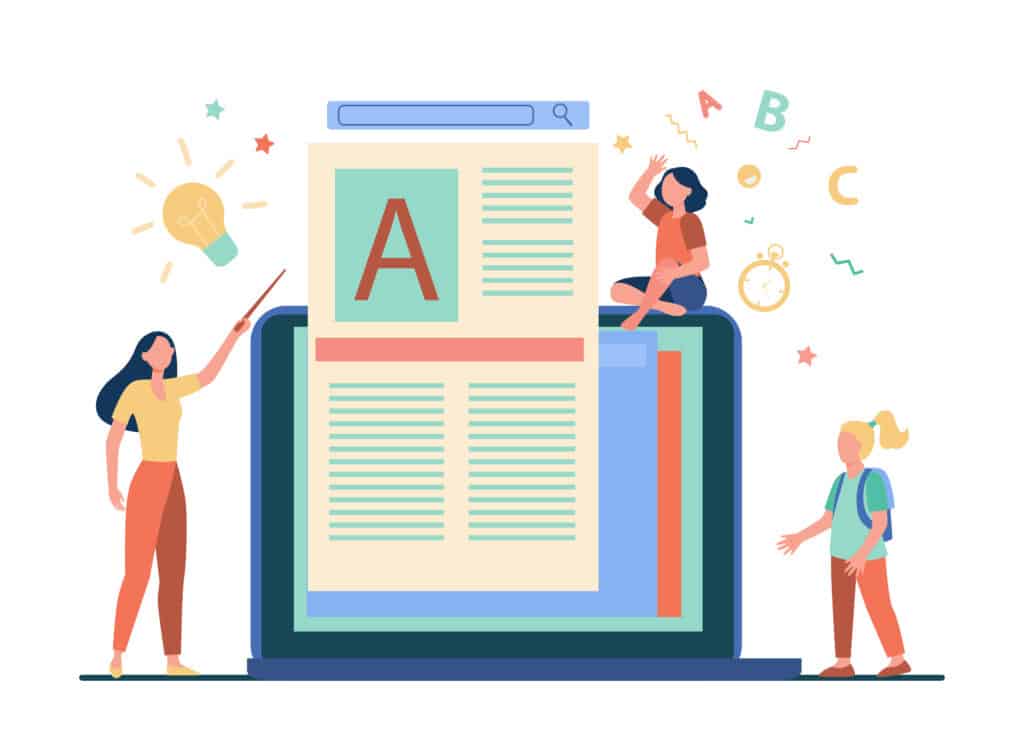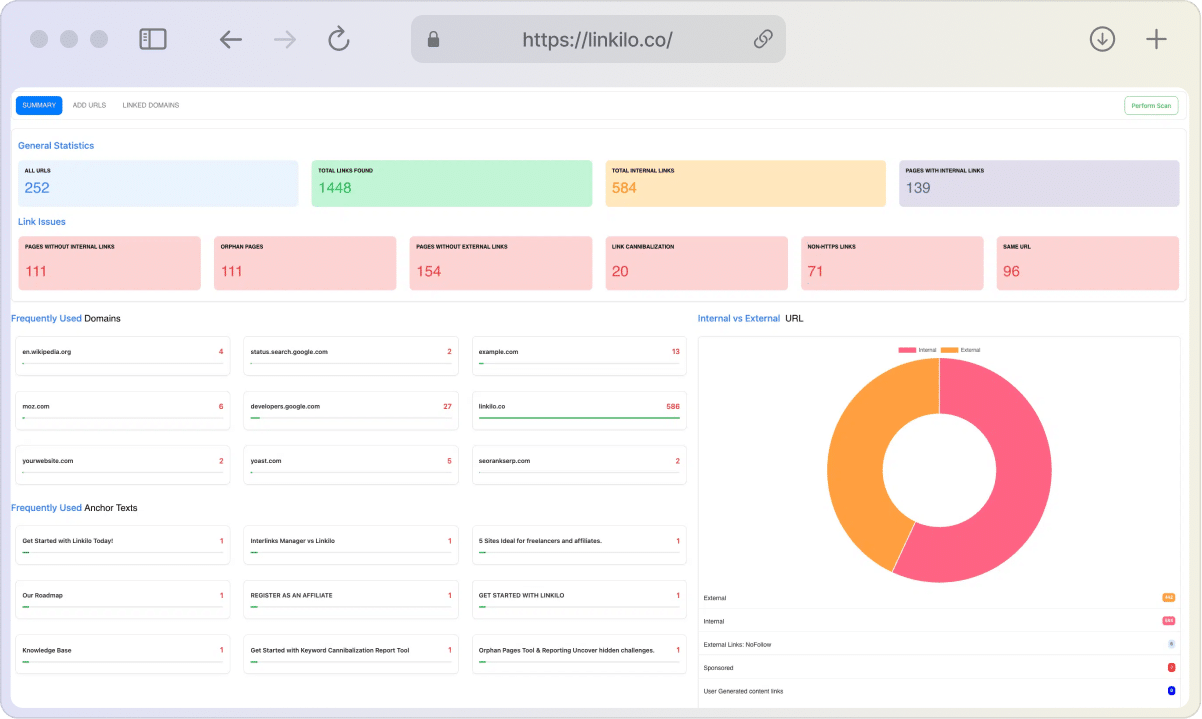Header tags are pivotal in structuring and clarifying your website’s content. Absent these tags, your site’s content risks becoming a daunting, unbroken block of text, potentially turning away readers.
These tags not only improve the user experience but are also crucial for Search Engine Optimization (SEO). They assist search engines in deciphering the structure and significance of your content.
This detailed guide explores the use and impact of H1, H2, and H3 tags. It offers practical tips for their effective application. By the conclusion of this guide, you’ll gain a thorough understanding of optimizing your content for clarity, engaging your audience, and enhancing visibility in search engine results.
What are Header Tags?
At its essence, a header tag is akin to a headline in a newspaper or online article. It acts as a clear marker, dividing your content into distinct sections. These tags, ranging from H1 to H6, with H1 being the most prominent, serve as visual cues for your readers.
They break the content into smaller, more manageable parts, aiding in better understanding and engagement. By using header tags, you enable your audience to concentrate on one segment at a time, enhancing their overall reading experience.
Why are Header Tags So Important?

Header tags play an indispensable role in crafting engaging and captivating content. They bring structure and organization to your text, significantly enhancing the user experience. Here’s why header tags are so essential:
- Enhancing Scannability: Studies show that most internet users skim content before committing to a thorough read. Header tags serve as clear markers, helping readers quickly identify the core ideas and structure of your content. This ease of skimming can reduce bounce rates and increase the time readers spend on your page.
- Facilitating Organization: Headers are instrumental in organizing your content logically. They guide readers through your article, making the information easier to follow and understand.
- Boosting SEO Effectiveness: Beyond aiding readers, header tags are critical for SEO. Search engines utilize these tags to grasp the hierarchy and context of your content. Well-optimized headers can improve your pages’ indexing and ranking. Including relevant keywords in your headers signals to search engines the pertinence of your content to specific searches.
Complete Header Tag Hierarchy: H1 to H6 Explained
The hierarchy of header tags, from H1 to H6, plays a crucial role in structuring your content effectively. Each level has its specific use and importance:
- H1 Tags: The H1 tag is the most significant, acting as the main title of your page. It’s the highest level of header and should succinctly capture the essence of your content. There should only be one H1 tag per page, often mirroring the title.
- H2 Tags: These are used for main sections within your content. H2 tags break down the content under the overarching theme set by the H1 tag. They are the primary subheaders, introducing new topics or ideas.
- H3 Tags: H3 tags are subheadings under the H2 tags, providing an additional layer of organization. They are used to break down the H2 sections into more detailed parts, helping to dissect complex topics.
- H4 Tags: These tags are less common but useful for further dividing H3 sections. They are typically employed in longer or more detailed content where additional layers of hierarchy are necessary.
- H5 Tags: H5 tags are used to provide even more granular detail within an H4 section. They are helpful in highly technical or academic content where numerous sub-levels of information are presented.
- H6 Tags: The H6 tag is the lowest level and is used sparingly. It’s suitable for the smallest subtopics within an H5 section. These are rarely needed in general web content but can be crucial in specialized or scholarly articles.
Visual Representation of Header Tag Hierarchy:
H1: Main Title
H2: Primary Section
H3: Secondary Subsection
H4: Tertiary Division
H5: Quaternary Detail
H6: Quintessential Sub-Detail
Each header tag level plays a unique role in organizing and structuring your content. By using these tags effectively, you can guide your readers through complex information in an intuitive and logical manner.
Best Practices for Heading Tags

To maximize the impact of your header tags on both readability and SEO, consider these key practices:
Single H1 Tag per Page for Clear Focus
Use only one H1 tag on each page to maintain a focused theme. Consider it the headline of your content, offering a concise summary of the topic. For example, for a page about gardening tips, your H1 could be “Essential Gardening Tips for Beginners.”
Strategic Keyword Integration in Headers
Insert relevant keywords naturally into your headers for SEO benefits, ensuring they fit seamlessly into the context. For instance, in an article about healthy eating, an H2 tag could be “Top 10 Superfoods for Daily Nutrition,” incorporating the keyword ‘superfoods.’
Headers Aligned with Google’s Featured Snippets
Structure your headers to answer potential user queries, increasing the chances of appearing in featured snippets. For example, use an H2 tag like “What Are the Benefits of Meditation?” followed by a direct answer in the next paragraph.
Consistent Header Structure Across the Site
Apply a uniform header usage practice throughout your website. This consistency aids in better indexing by search engines. As an example, consistently use H2 tags for main section titles and H3 tags for subsections across all articles.
Balance Length and Engagement in Headers
Ensure headers are short yet engaging. A compelling header might be “5 Revolutionary Tech Gadgets in 2024,” which is concise, informative, and intriguing.
Guide Your Readers with Logical Header Flow
Use headers as navigational tools in your content, each leading logically to the next. A well-structured article on climate change might have H2 headers like “Current Impact of Climate Change,” followed by “Future Predictions and Trends.”
Simplify Headers to Enhance Accessibility
Steer clear of overly technical language in headers, keeping them accessible to a broader audience. For a technical topic like blockchain, instead of a complex header, opt for a simplified version like “Blockchain Explained: A Beginner’s Guide.”
Infuse Brand Voice into Headers
Reflect your brand’s personality in your headers. If your brand is known for a conversational tone, an H2 header in a blog post might read, “How I Turned My Hobby into a Thriving Business.”
Heading Tag Font Sizes: Importance and Best Practices
Font size in heading tags is key to creating an attractive, readable website. It’s not just about style; the right font size can significantly improve user experience and accessibility. Here’s a breakdown of best practices:
- Hierarchy Through Font Size: Establish a clear hierarchy using different font sizes for H1, H2, H3, and so on. Typically, H1 tags should have the largest font size as they are the main headers. For instance, you might use a 32pt font for H1, 24pt for H2, and 18pt for H3. This progression naturally guides the reader’s eye and clarifies the content structure.
- Consistency Across the Site: Maintain consistent font sizes for each header type throughout your website. This uniformity helps users quickly understand the structure and layout of different pages. For example, if H2 tags are 24pt on one page, they should remain 24pt across all pages.
- Responsive Font Sizes for Different Devices: Ensure that your heading fonts are responsive, meaning they adjust appropriately for different screen sizes. On mobile devices, a slightly smaller font size can make the content more accessible. For example, an H1 tag that is 32pt on a desktop might scale down to 28pt on mobile devices.
- Readability is Key: Choose font sizes that enhance readability. Headings should stand out but not overpower the rest of the content. A size too large can be jarring, while too small can blend in too much with the body text.
- Balancing Style and Function: Your font style and size should reflect your brand’s identity while remaining functional. A tech company might opt for sleek, modern fonts with crisp, large headers, whereas a literary blog might choose more traditional, serif fonts with moderate sizing.
- Testing Across Different Browsers and Devices: Always test how your headers look on various browsers and devices. This step ensures your chosen font sizes deliver a consistent user experience everywhere.
Wrap Up: Great Headers are a Form of Art
Header tags are more than just functional elements; they are critical tools in organizing and enhancing your content’s readability. Effective use of H1, H2, and H3 tags can transform your content into a structured, engaging narrative that is both user-friendly and SEO-optimized. Proper implementation of these tags ensures your content is not only easy to navigate but also stands out in search engine results.
By applying these header tag strategies, you can significantly improve the clarity and accessibility of your website’s content. Remember, the art of creating compelling headers lies in balancing SEO needs with captivating and clear language. This guide should serve as a stepping stone in refining your content strategy, aiming to boost both the readability and discoverability of your site.




